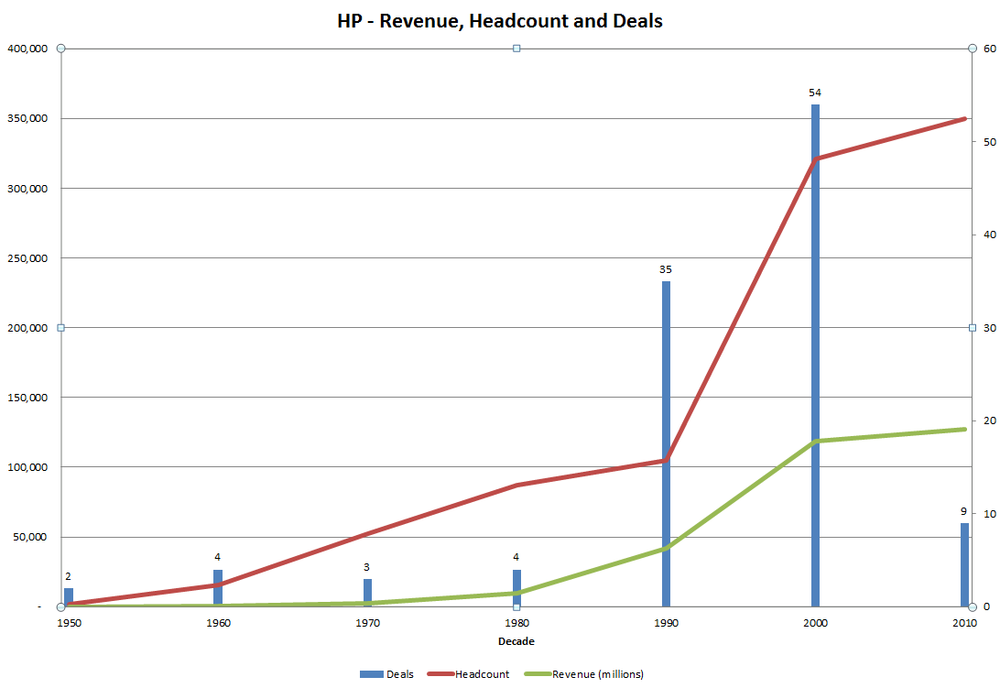From one end of the financial spectrum to another... HP had its annual meeting last week where Meg Whitman introduced her plan to combine the PC and Imaging divisions. HP has been through a great deal in the past 10 years and getting back to stable ground is not going to be quick or easy. And it does not seem like the press is going to give the new CEO much latitude. Here are a few of the headlines:
MarketWatch: H-P’s latest move draws skepticism
WSJ: CEO Whitman Tells H-P’s Workers ‘Everything Is on Table’ in Overhaul
Reuters: HP creates PC-printing power, Wall St waits and sees
This is in the context of their ongoing "One HP" initiative, which strives to unify a company that has been operating as fragments for decades. In recent years growth by acquisition is one of the few things that the many HP CEOs have agreed on. The HP acquisitions page on Wikipedia tells the whole story. The revenue and head count growth is dramatic.
Whitman is right to identify the disparate nature of the company as a big problem. Employees that joined the company over a decade and three CEOs ago still refer to themselves as Compaq people. Same with employees from 3 Com, 3 Par, Mercury Interactive, EDS, and most recently the employees from the $11 billion acquisition of Autonomy last year.

The list has so many multi billion dollar deals on it that it seems unlikely that one company could be made of the resulting tangled mess. The aim behind combining the PC and Imaging divisions is more likely to convince the employees in the PC division that the persisting story about a spin off is not going to happen and that they should get back to work.
We all remember how big the Compaq deal was when it was announced. I had forgotten that there were 53 other deals in that decade! The company grew from 100,000 employees to over 300,000. Nothing is impossible, but making One HP out of this will be quite a challenge.